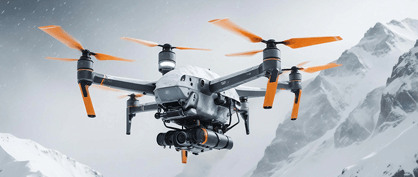Cosmic Time Capsules: The Science Behind Meteorite Hunting

By Sierra McConnell
Have you ever seen a shooting star streaking across the sky? Did you know that these fireballs contain a sort of time capsule from outer space?
No, this isn’t an episode of “Doctor Who.” Meteorites, which are rocks that fall from space to the surface of Earth, are pieces of history older than the dinosaurs. Scientists study the composition of meteorites to give us clues about how our solar system began.
Finding Meteorites Is Hard
Unlike a space capsule returning to Earth, we can’t guide meteorites to where we want them to land. They fall randomly and get lost in huge areas. Imagine trying to find a small brown ball in the middle of miles of desert or rocky terrain. Alone, this could take forever. With a small group, you might find it in a few months. That’s what it has been like for scientists—walking around for hours, staring at the ground, hoping to find the meteorite that could be any size, shape, or color.
Enter the Dynamic Duo: Drones and AI
One team of scientists at Curtin University in Perth, Australia, started using drones, which are essentially flying robots equipped with cameras, to scan large areas that would normally take teams months or even years to search. They also used artificial intelligence (AI) to help the drones spot meteorites in the pictures they take as they fly around.
How do they do it? These scientists pack up their drones and camping equipment and travel for days to reach remote locations. Once there, they fly the drones about 65 feet above the ground, taking pictures every second. AI scans these images for objects that look like meteorites. Sometimes, AI gets it wrong—it might mistake animal waste, tin cans, or even sleeping kangaroos for meteorites. Scientists then sort through the images and pick out the most promising objects. If something looks like a meteorite, they send a smaller drone to investigate or check it out themselves.
Finding meteorites isn’t just about having a cool space rock collection. These cosmic visitors help us understand how planets formed and what the early solar system was like. Scientists are also working to improve AI to make it even more accurate, hoping to use this technology in remote places like Antarctica or even on other planets.
The next time you wish upon a shooting star, remember: its remains might be out there holding secrets of the universe that are waiting to be discovered.
Scientists study these meteorites’ composition to give us clues as to how our solar system began.